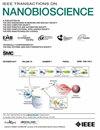用于心脏生物标记检测的三维打印交织电极
IF 4.4
4区 生物学
Q1 BIOCHEMICAL RESEARCH METHODS
引用次数: 0
摘要
生物标记物的鉴定对疾病的早期诊断和治疗有重大好处。因此,对快速、特异、灵敏度高、范围广的生物标记物检测所需的低成本、一次性护理点诊断设备的需求与日俱增。插入式电极(IDE)因其灵敏度高、成本低和制造过程简单而成为应用最广泛的传感器之一,尤其是在化学和生物传感器中。在这项工作中,开发了一种简单的三维打印 IDE 结构,用于检测心肌肌钙蛋白 I,以提示急性心肌梗死(AMI)的风险。IDE 采用三维打印技术制造,电极的制造使用了导电复合材料聚乳酸(PLA)长丝。经计算,该心肌肌钙蛋白 I 传感器的定量限和检测限分别为 0.233 纳克/毫升-1 和 76.97 皮克/毫升-1,这两个数值对于急性心肌梗死的鉴定具有重要的临床意义。为检测分析物浓度,还采用了电化学阻抗光谱法(EIS)和循环伏安法(CV)等电化学分析技术。此外,利用这种制造方法可以制造出 IDE,价格低于 0.4 美元,可用于检测其他几种生物标记物。本文章由计算机程序翻译,如有差异,请以英文原文为准。
3D Printed Interdigitated Electrodes for Cardiac Biomarker Detection
The identification of biomarkers has significant benefits for early disease diagnosis and treatment. Hence, there is an increasing demand for low-cost, disposable point-of-care diagnostic devices for rapid and specific biomarker detection, with good sensitivity and range. Interdigitated electrodes (IDEs) are among the most widely used transducers, especially in chemical and biological sensors, because of their high sensitivity, low cost, and straightforward manufacturing procedure. In this work, a simple 3D printed IDE structure has been developed for cardiac troponin I detection to indicate the risk of acute myocardial infarction (AMI). IDEs have been fabricated using 3D printing technique and the electrically conductive composite polylactic acid (PLA) filament being utilized for the fabrication of electrodes. The demonstrated cardiac troponin I sensor has a calculated quantification limit and detection limit of 0.233 ng ml
$^{\mathbf {-{1}}}$
and 76.97 pg ml
$^{\mathbf {-{1}}}$
, respectively which are clinically significant ranges for AMI identification. Electrochemical analytical techniques, such as electrochemical impedance spectroscopy (EIS) and cyclic voltammetry (CV), were carried out for the detection of analyte concentration. Furthermore, using this fabrication methodology IDEs can be fabricated for under US 0.4 which can be utilized to detect several other biomarkers.
求助全文
通过发布文献求助,成功后即可免费获取论文全文。
去求助
来源期刊

IEEE Transactions on NanoBioscience
工程技术-纳米科技
CiteScore
7.00
自引率
5.10%
发文量
197
审稿时长
>12 weeks
期刊介绍:
The IEEE Transactions on NanoBioscience reports on original, innovative and interdisciplinary work on all aspects of molecular systems, cellular systems, and tissues (including molecular electronics). Topics covered in the journal focus on a broad spectrum of aspects, both on foundations and on applications. Specifically, methods and techniques, experimental aspects, design and implementation, instrumentation and laboratory equipment, clinical aspects, hardware and software data acquisition and analysis and computer based modelling are covered (based on traditional or high performance computing - parallel computers or computer networks).
 求助内容:
求助内容: 应助结果提醒方式:
应助结果提醒方式:


